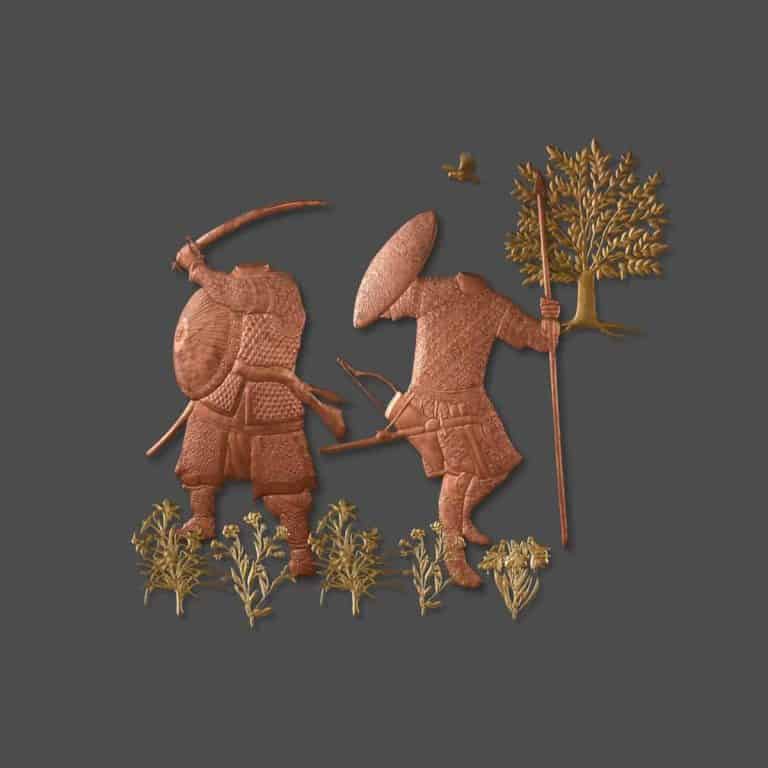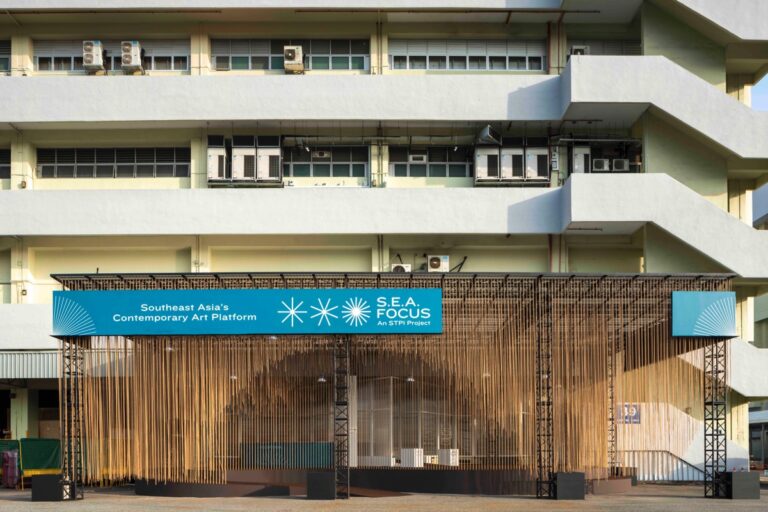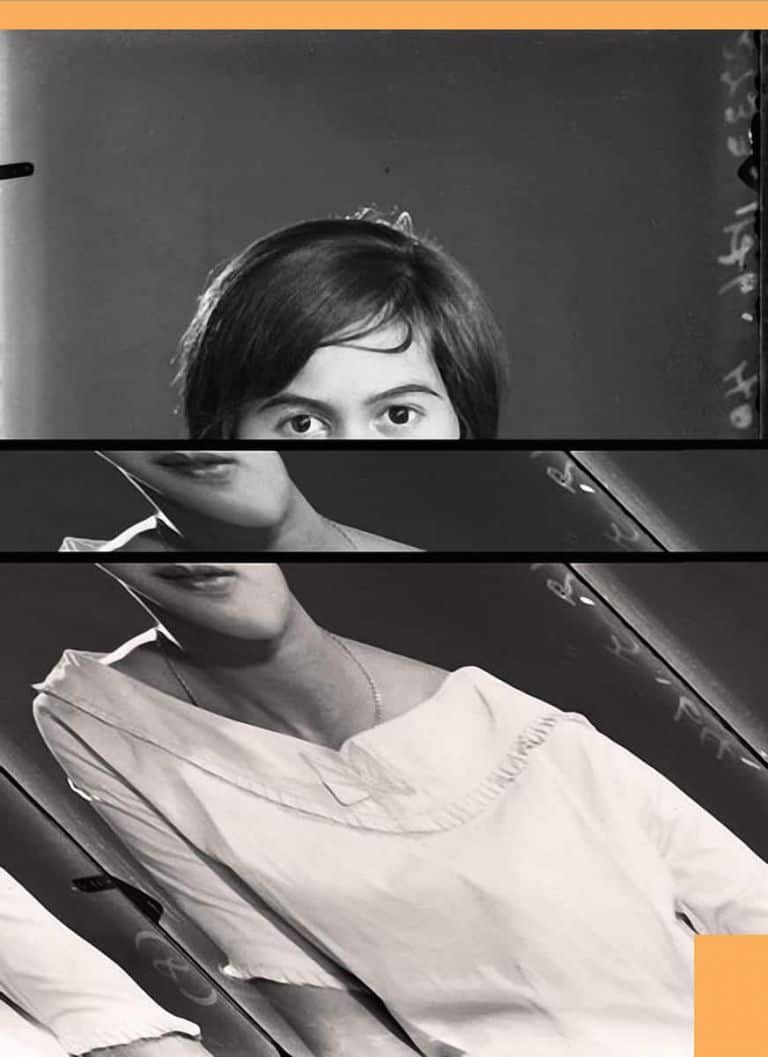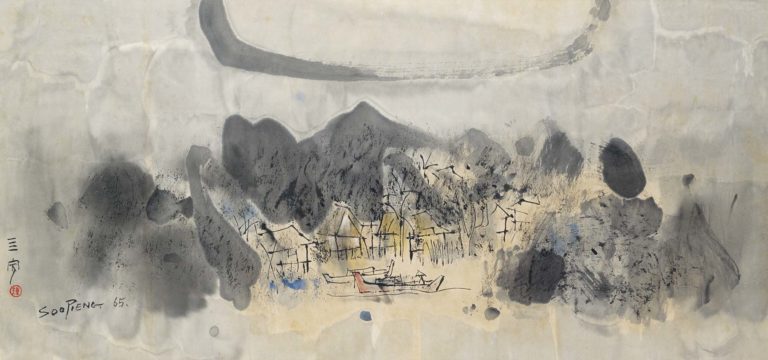What comes to mind when you think of the term “painting?”
Lush landscapes rendered in oil? Stately portraiture? ‘Shanshui’- style Chinese ink?
If any of the above popped into your head, (or nothing at all, because let’s be real here, not all of us are trained art aficionados), let the Modern Art Society challenge and school you further, with its 57th annual exhibition at the Singapore Chinese Culture Centre.
A brief history lesson
Who or what is the Modern Art Society Singapore ?
As art historian Jeffrey Say explains,
“On 12 October 1963, the Modern Art Society organised its inaugural art exhibition featuring seven artists at the National Library. The exhibition was titled Modern Art, featuring 70 paintings by seven artists. The use of the phrase “modern art” in its title was purposeful and even ideological. It was a declaration that the exhibition was displaying works that represented the ‘new,’ the ‘progressive’ and ‘independence,’ values that were in tandem with the forging of a new nation, characterised by rapid urbanisation and industrialisation.”
That same exhibition caused such a stir, that one of the works in it was slashed and defaced.
But by whom?
To this day, nobody knows.
In 1972, Cheo Chai Hiang’s artwork proposal 5’ x 5’ (Singapore River) was submitted to an annual exhibition of the Modern Art Society and soundly rejected. The work was, to put it simply, of nothing. Well, nothing substantively physical, that is. It was essentially a series of instructions for the demarcation of an empty square measuring five feet by five feet, across a wall and the floor. Cheo’s proposal and the ensuing response from Modern Art Society co-founder Ho Ho Ying in his own 1972 letter are well-noted by scholars today as being central to the emergence of conceptual and figurative art theories in Singapore.
Speaking plainly, while Ho agreed that art should not be confined to being made of “canvas and steel rods,” he still personally believed in the “importance of the created form,” not being able to accept as art, “found objects that were neither well-thought out nor carefully fabricated.”
Ho’s precise and well-formed arguments struck at the very heart of art appreciation, highlighting a tension that continues to exist today on what exactly constitutes ‘fine art’ and how viewers should think about approaching it. Is the skill of the artist’s hand to be valued above all else ? Or do ideas and concepts about the world around us matter more?
As Say summarises, “those were really exciting times in which the Modern Art Society operated. Art historically, it was very significant as (the society) espoused art which reflected the identity of newly independent nation.”
The Society is influential and relevant not just from an art historical perspective, but from a contemporary one as well. It continues to mount yearly art exhibitions and boasts of a highly impressive body of members, one that includes seven recipients of Singapore’s highest art accolade, the Cultural Medallion.
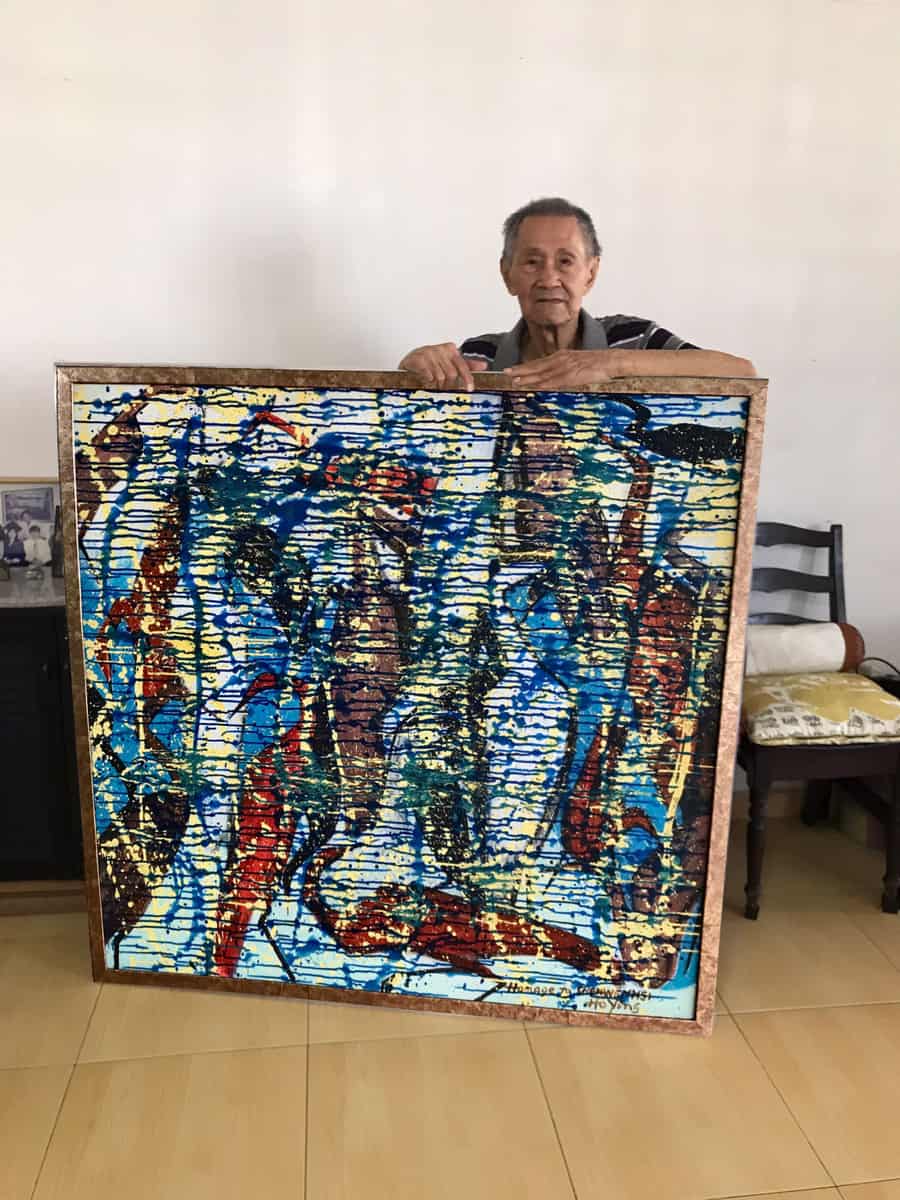
What’s this latest show about?
Running from 13 to 16 January 2022, Painting Today 2022 recalls the dynamic and inquisitive roots of the Modern Art Society by questioning one of the most fundamental tools in an artist’s trade—the medium of painting. The curatorial direction behind the show is as diverse as the works on display. The curatorial team includes a mix of younger and more experienced artists such as Tan Seng Kok, Teo Huey Ling, Chan Choy Har and Priscilla Quek Wei Ting.
With full awareness of how the medium of painting has ebbed and flowed in terms of popularity and how it has been thoroughly interrogated, questioned and probed over time, the Modern Art Society’s Painting Today 2022 exhibition seeks to question what painting truly is, and what it can be.
As Quek explains, “There will be works ranging from paintings on canvas, painting installations, painterly sculptures, and modular forms. The representations will vary from the figurative to the abstract in their own themes.”
What should I be looking out for in this exhibition?
Read on for some of the highlights of Painting Today 2022.
First, stop and enjoy pioneer second-generation artist and Cultural Medallion recipient Tay Chee Toh’s work.
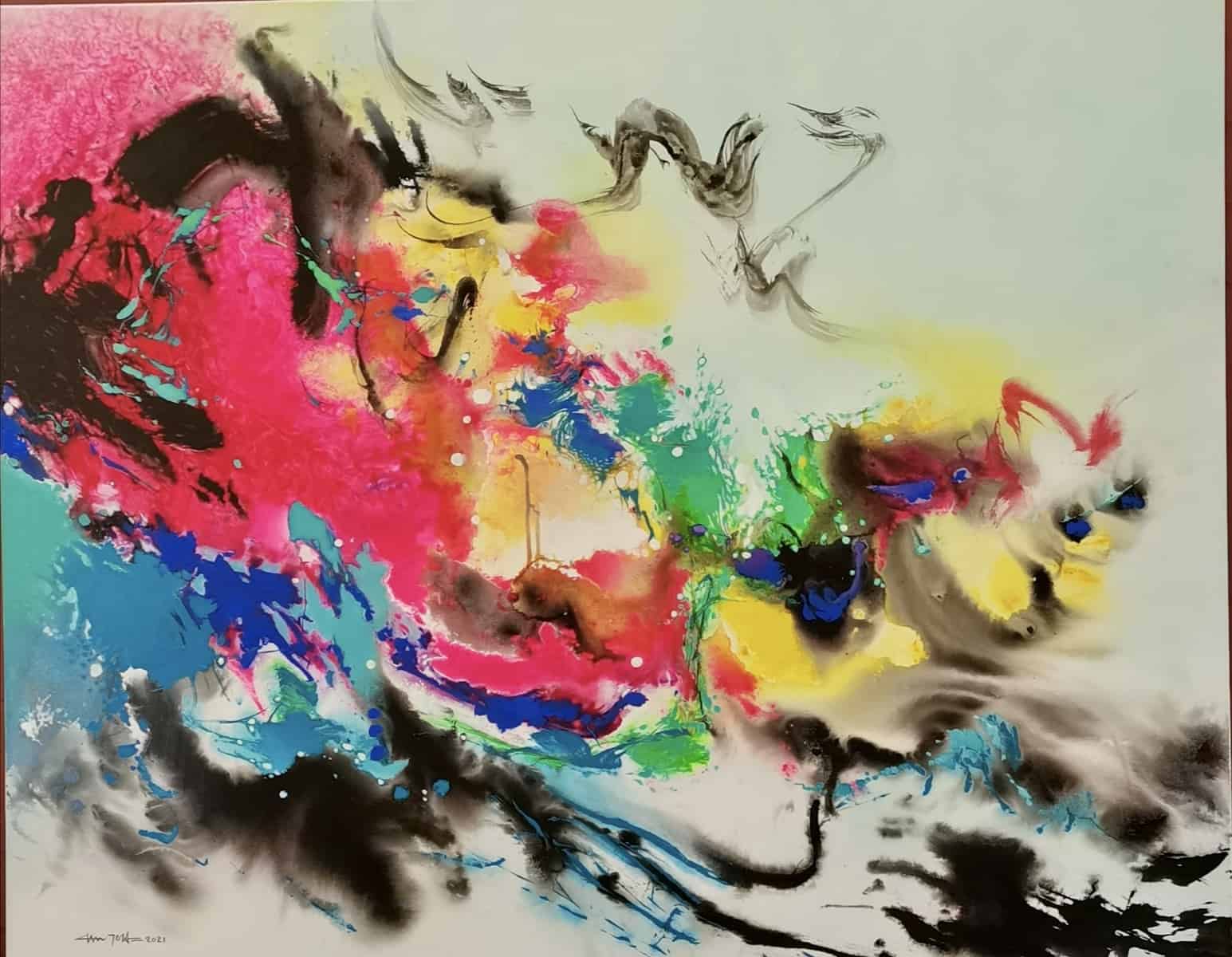
The octogenarian who is also a Modern Art Society co-founder, is going strong in his practice with this abstract explosion of colours. The lively yellows, pinks and blues inspire a kind of exhilaration, but one which is reined in with sober, smoky plumes of grey and black. Do you see an allegory here for the vicissitudes of pandemic life? Or perhaps a quirky bug-eyed creature on the extreme right, blasting out exuberantly from its cocoon? Or perhaps you see something else altogether? The openness with which Painting Today 2022 approaches its audience allows space for all kinds of interpretations to co-exist, mingle and even clash with one another.
Two paintings in particular evoke deep feelings about technology and digital advancements.
Baet Yeok Kuan’s careful rendition of a typewriter is served up with a palpable dose of nostalgia. The grey tones and little spots of white dotted over the image recall vintage photographs or old photocopies, infusing the painting with a sense of longing for the past. The work contrasts beautifully with Tan Seng Kok’s painting, a vivid work which brings to mind retro television sets filled with indiscernible images, hinting at abstract explosions and urban messiness. It made us think about media coverage of Operation Desert Storm back in the 1990s, often billed as the first war televised around the world and in real time, around the clock.
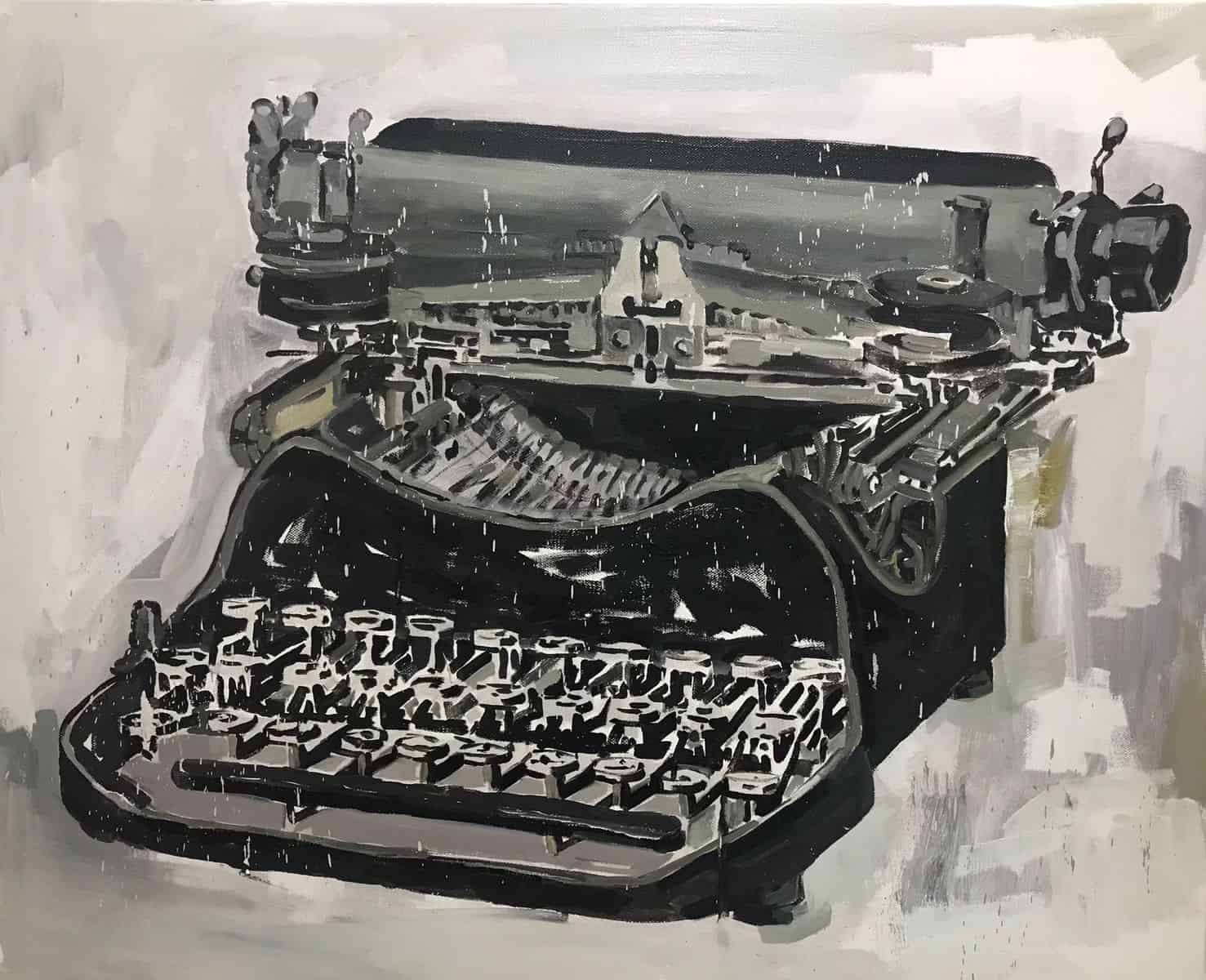
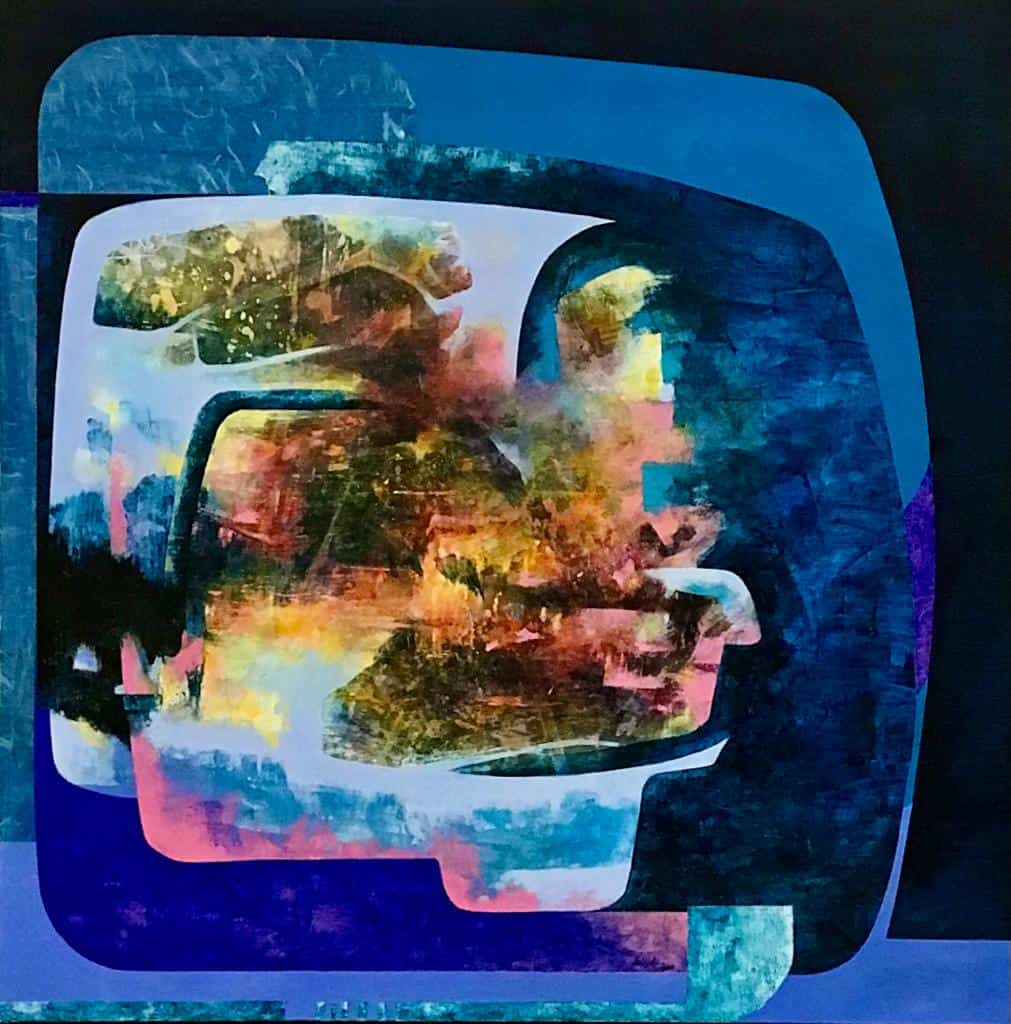
Teo Huey Ling’s work also gives viewers pause for thought as it looks nothing like what one might traditionally understand to be a “painting.”

The 2021 work entitled Scene at Kallang River is an art installation which portrays a site where the artist once lived. Look closely at the work and you might see the suggestions and hints of plants, the wings of butterflies, and a stormy rain-filled sky. The installation prompts a much deeper consideration of whether sculpture can be thought of as a kind of ‘drawing in space’ (as opposed to painting or drawing on a two-dimensional surface, such as canvas).
Quek personally recommends looking out for the panel discussion on the exhibition taking place on 15 January at the Singapore Chinese Culture Centre, featuring herself, art historian Jeffery Say and gallery partner Dr. Pwee Seng Hock. The question to be addressed is the rather poetic non-sentence “____ painting today?” To switch things up even further, the panel will be moderated by a non-painter—artist, curator and educator Michael Lee.
Panel moderator Lee told us that he particularly enjoyed the openness of the Modern Art Society, highlighting the show’s inclusion of both accomplished senior artist and Cultural Medallion recipient Teo Eng Seng, as well as younger artist Yen Phang.
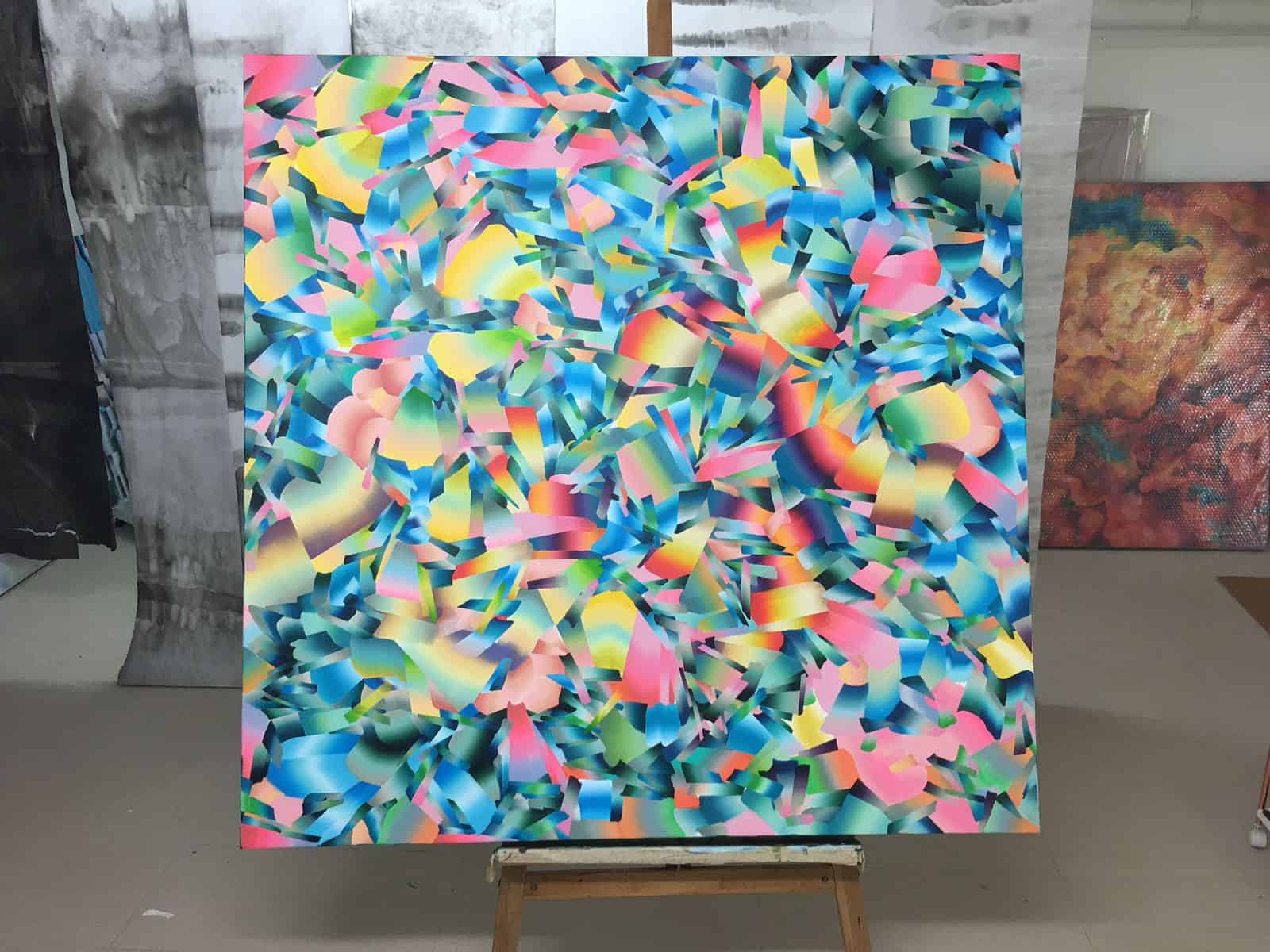
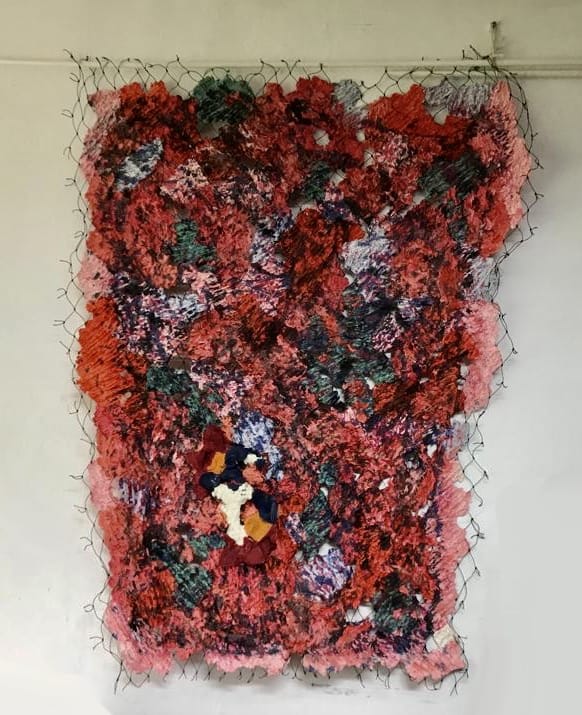
As Lee explains, Teo is a renowned inventor of “paperdyesculp”, a hybrid form of painting-sculpture, while Phang is among a new generation of artists who divide their time between studio practice and curatorial projects.
In an another interesting counterpoint, the exhibition also features work by popular street artist TraseOne, which engages with the very contemporary notion of surveillance culture in pandemic times.
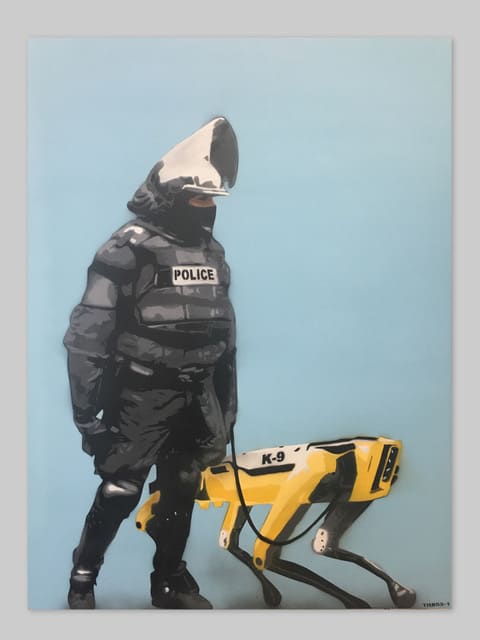
The inclusion of this work prompts questions on how street art with its subversive roots in vandalism and counterculture, feeds into the existing notions of what painting is, and what it can achieve.
Liu Wen Chao is yet another artist to watch.
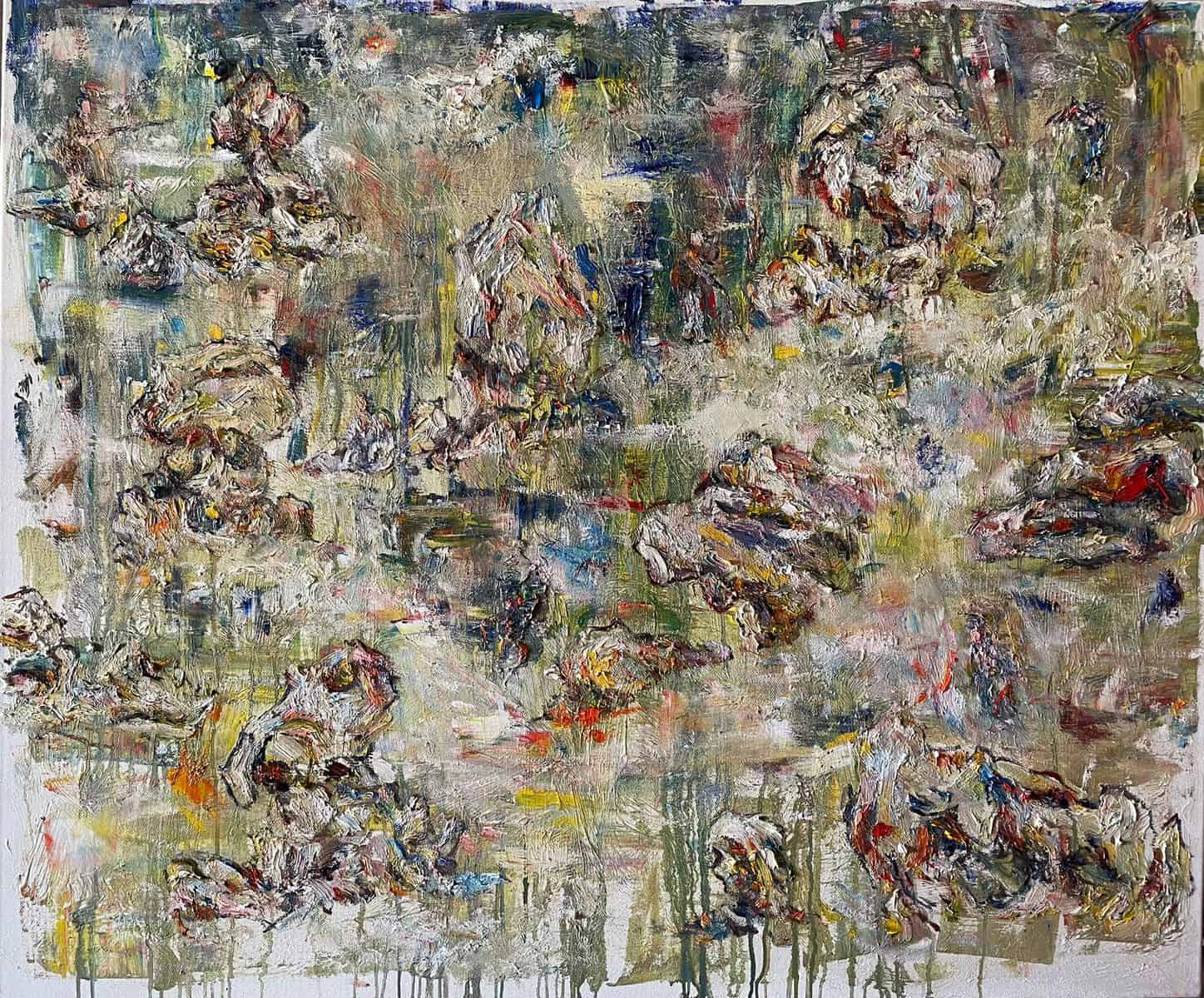
The young China-born artist is a recent graduate of the Nanyang Academy of Fine Arts and served as an assistant to the late Lee Wen, helping with the work of the Independent Archive. Chao’s oeuvre is diverse, including performance art and video, and the multidisciplinary nature of his practice shines through in the energetic gestural forms found in his abstract work for Painting Today 2022.
If you’re wondering how all these diverse – and unquestionably lovely – art works fit together, we’d recommend going back to Ho Ho Ying’s 1972 letter for some sound words of advice:
“An artist values a viewers’ response; he does not paint for himself. He welcomes constructive criticism. In order to avoid self-gratification, the communication between the artist and the viewer should go both ways. It should not be a one-way traffic.”
In other words, visit the show, attend the panel discussion, talk to the artists and talk about the art.
Painting Today 2022 offers audiences the precious chance to gain insight into the thoughtful contemporary work of an art society of great historical importance – don’t miss it.
_______________________________________________
Painting Today 2022 runs from 13- 16 Jan at the Singapore Chinese Culture Centre. Details can be found here.
A live recording broadcast of the 15 January panel discussion will be available on the Modern Art Society’s Facebook Page.
All images are courtesy of the Modern Art Society.
This article is produced in paid partnership with the Modern Art Society. Thank you for supporting the institutions that support Plural.






